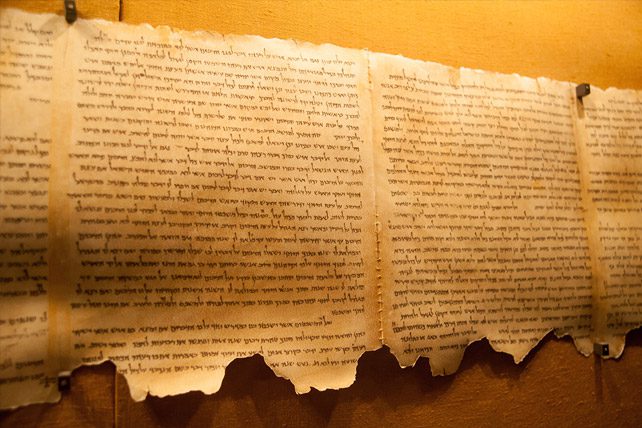The quest to uncover artifacts from the Bible has long captivated archaeologists, historians, and believers alike. Artifacts from the Bible era offer a tangible connection to the stories that have shaped religious thought, literature, and culture for millennia. The discovery of such artifacts not only enriches our understanding of ancient practices and beliefs but also provides an invaluable context for the events and figures depicted in the sacred texts.
Artifacts From the Bible
Dead Sea Scrolls
The Dead Sea Scrolls are arguably among the most profound archaeological discoveries of artifacts from the Bible. Found in caves near the Dead Sea, these ancient manuscripts contain some of the oldest known biblical texts, dating back to the third century BCE. The scrolls include portions of every book in the Hebrew Bible, except for the Book of Esther, offering crucial insights into the text’s transmission and the religious landscape of the time.
Tel Dan Stele
Among great discoveries of artifacts from the Bible the Tel Dan Stele, an ancient basalt inscription, provides compelling archaeological evidence of King David’s existence. Mentioning the “House of David,” this artifact lends historical credibility to the biblical narrative, which often faced skepticism over the historical accuracy of its early monarchic period. Discovered in the ruins of Tel Dan in northern Israel, the stele dates to the 9th century BCE.
Cyrus Cylinder
The Cyrus Cylinder is a clay cylinder inscribed with a declaration from Cyrus the Great, the founder of the Persian Empire. It details Cyrus’s decree allowing Jews to return to Jerusalem and rebuild their temple, an event chronicled in the Bible. This artifact, dating from the 6th century BCE, corroborates the biblical accounts of the end of the Babylonian exile, highlighting the historical interactions between the Jewish people and the Persian Empire.
Pilate Stone
The Pilate Stone is a significant archaeological find that mentions Pontius Pilate, the Roman governor who presided over the trial of Jesus. Discovered in Caesarea Maritima in 1961, this inscription provides historical confirmation of Pilate’s role and existence during a pivotal moment in Christian narrative, bridging biblical accounts with historical records.
Pool of Siloam
Mentioned in the New Testament as the site where Jesus healed a blind man, the Pool of Siloam in Jerusalem has been archaeologically identified and excavated. This first-century pool not only serves as a setting for one of Jesus’s miracles but also offers insight into the ritual purity practices and architectural advancements of the period.
Archaeological Evidence and the Bible
The relationship between archaeological evidence and the biblical narrative is complex and multifaceted. While some discoveries offer direct corroboration of biblical events and figures, others provide a broader cultural and historical context that enhances our understanding of the Bible. These artifacts underscore the rich interplay between faith, history, and archaeology, inviting believers and scholars alike to explore the depths of biblical history.
Challenges and Controversies
When it comes to artifacts from the Bible archaeological interpretation is not without its challenges and controversies. Debates over the dating, authenticity, and interpretation of biblical artifacts are common, reflecting the broader complexities of reconciling archaeological findings with religious texts. These discussions are crucial for advancing our understanding of the past and the ongoing dialogue between faith and science.
Archaeological discoveries have profoundly influenced theological perspectives by providing tangible evidence that complements and sometimes challenges traditional interpretations of biblical narratives. These findings encourage a dynamic engagement with the Bible, prompting theologians, scholars, and believers to reconsider and deepen their understanding of the text in light of historical evidence. As archaeological research continues, its contributions to theological discourse promise to further enrich the complex interplay between faith, history, and scholarship.

